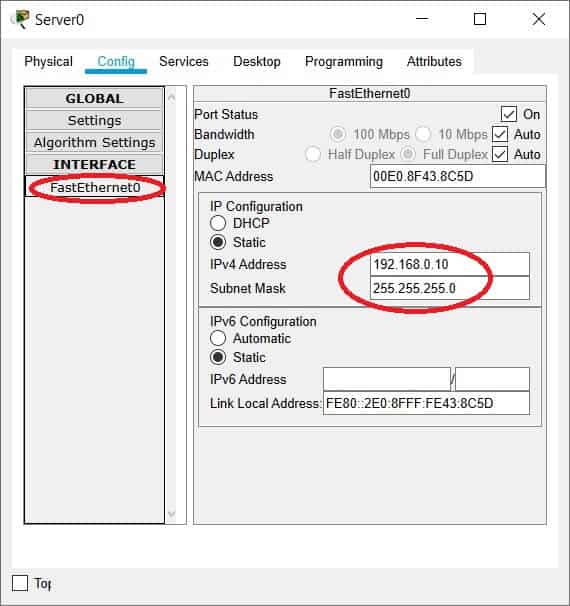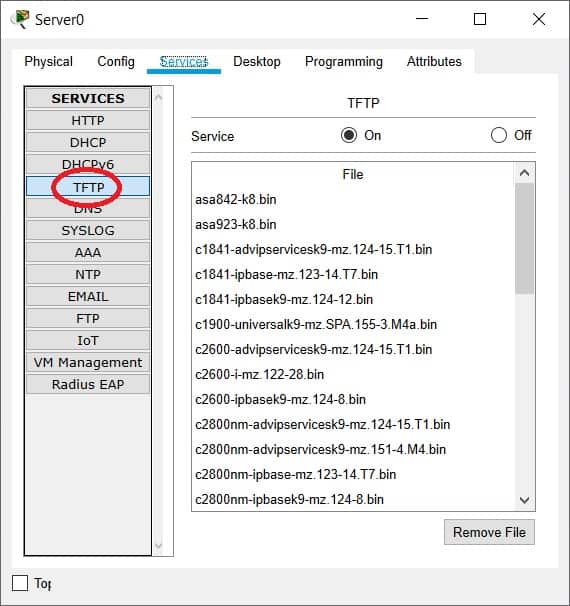It is always a good idea to have a backup copy of the configuration of your IOS device. IOS configurations are usually copied to a TFTP server using the copy command. You can backup both the startup configuration and the running configuration of your device. The copy command accepts two parameters: the first parameter is the from location, and the second it the to location.
TFTP is a client-server network protocol used to send and receive files. To backup files to a TFTP server, you will have to set it up first. You can use Packet Tracer to do so; just add a Server to your topology, assign it an IP address and enable the TFTP service:
To backup the running configuration to a TFTP server, you can use the copy running-config tftp: command:
R1#copy running-config tftp: Address or name of remote host []? 192.168.0.10 Destination filename [R1-confg]? Writing running-config...!! [OK - 561 bytes] 561 bytes copied in 0.001 secs (561000 bytes/sec)
Remember, the first parameter after the copy keyword is the from location, while the second one is the to location. In our case, the from location is the current running-config, and the to location is the remote TFTP server.
To restore the configuration, just switch the order of the parameters – copy tftp startup-config:
R1#copy tftp: running-config Address or name of remote host []? 192.168.0.10 Source filename []? R1-confg Destination filename [running-config]? Accessing tftp://192.168.0.10/R1-confg... Loading R1-confg from 192.168.0.10: ! [OK - 561 bytes] 561 bytes copied in 0 secs
Notice that we had to specify the filename, along with the IP address of the TFTP server.
Download our Free CCNA Study Guide PDF for complete notes on all the CCNA 200-301 exam topics in one book.
We recommend the Cisco CCNA Gold Bootcamp as your main CCNA training course. It’s the highest rated Cisco course online with an average rating of 4.8 from over 30,000 public reviews and is the gold standard in CCNA training:


